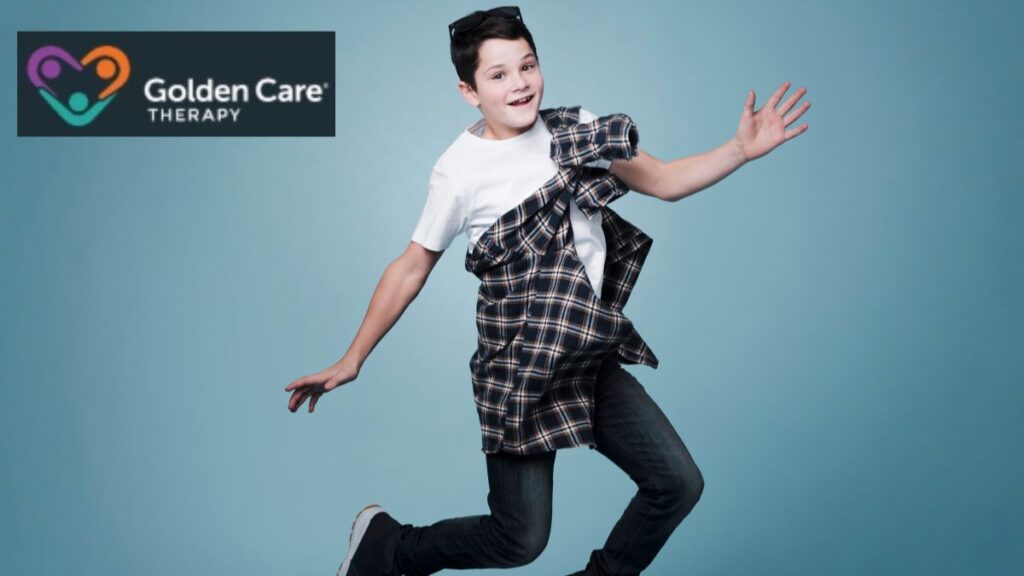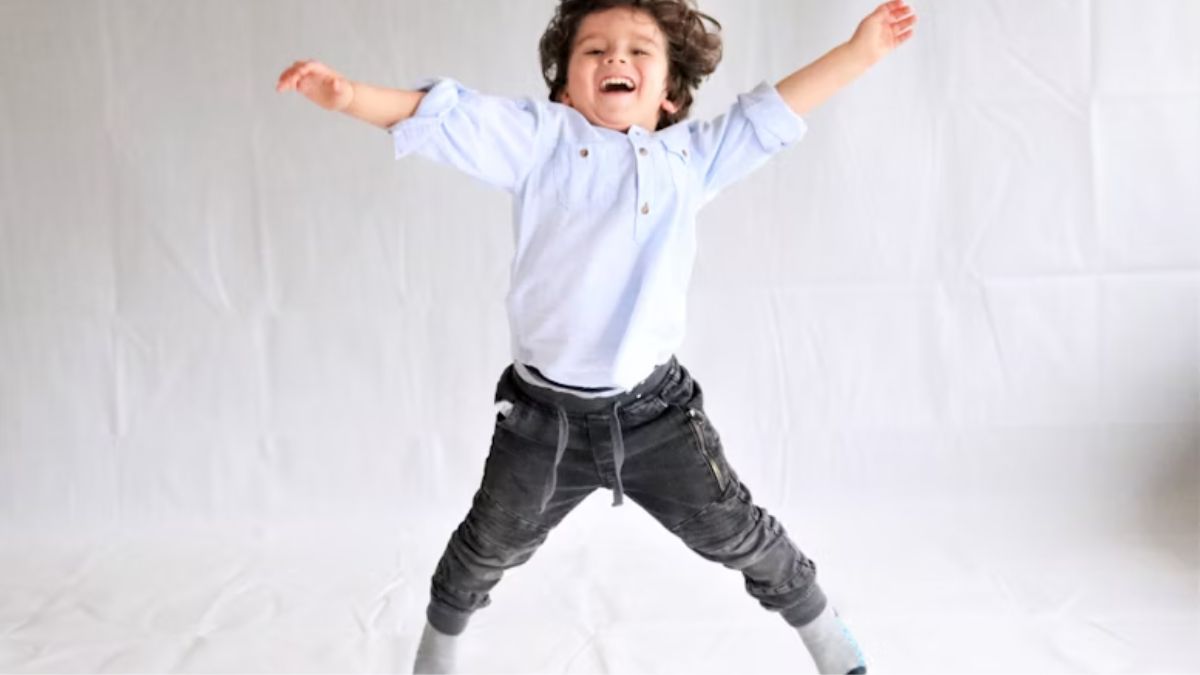If you’ve ever watched a child on the autism spectrum jump with joy, you’ve probably wondered—why do they love it so much? Parents often notice their child bouncing on the couch, hopping in place, or even jumping in the crib at night. At first, it may seem like endless energy. But the truth runs deeper. Jumping in autism is more than play. It’s a way of exploring the body, regulating emotions, and making sense of the world.
Scientists, therapists, and parents alike have seen how movement connects to growth. From sensory needs to stimming, jumping plays a powerful role in the daily lives of autistic children. But what exactly fuels this love for leaping? And how can families support it in safe, positive ways? Let’s dive in.
The Science Behind Jumping in Autism
Jumping isn’t just fun—it’s deeply sensory. Two key systems explain why children on the spectrum often crave it:
- Proprioceptive system—This system tells the brain where the body is in space. When a child jumps, the muscles and joints send strong signals to the brain. These signals bring comfort and body awareness.
- Vestibular system—This is tied to balance and movement. Jumping activates it, giving a thrilling yet regulating sense of control.
Occupational therapists often call this “sensory input.” Children with autism sometimes need more of it than their peers. Jumping delivers that input in a powerful, easy way.
A 2015 study in Frontiers in Integrative Neuroscience found that repetitive movement, like jumping, can improve regulation and help reduce sensory overload. For many children, it’s not just about fun. It’s about feeling grounded.
Stimming: Why Repetition Feels So Good

Jumping is also a form of stimming—short for self-stimulatory behavior. Stimming helps autistic children manage emotions and sensations. It can look like hand-flapping, spinning, or humming. But jumping is one of the most common.
Why? Because it offers:
- Predictable rhythm
- Big bursts of muscle feedback
- Instant sensory satisfaction
Think about how it feels to bounce on a trampoline. The rhythm calms the body while energizing the mind. For children on the spectrum, that feeling is even more powerful.
A 2018 survey by Autism Speaks found that over 70% of parents reported repetitive movement like jumping as part of their child’s daily routine. Far from being harmful, stimming often supports emotional balance.
Jumping in Autism: Real-Life Examples
To see how this plays out, let’s look at real-world cases.
- The crib jumper: Dr. Elizabeth Pulliam, a pediatric psychologist at Arkansas Children’s Hospital, once worked with a 2-year-old who loved to jump in his crib so much he broke the mattress springs. For him, jumping wasn’t mischief. It was a way to feel secure before bed.
- The trampoline lover: In South Africa, therapist Ilse Kilian-Ross noticed children with autism calmed down after structured trampoline time. They became more focused during class afterward.
- The backyard jumper: One mother shared that her son would leap for hours on a backyard trampoline. Once he jumped, he could sit through dinner calmly, something impossible without the movement first.
These stories show that jumping is often more than play—it’s a key to regulation and learning.
Emotional Regulation Through Jumping
Have you ever felt restless until you went for a run or stretched your body? Children with autism often experience that on a deeper scale. Jumping helps them regulate big feelings like
- Excitement
- Anxiety
- Frustration
A study published in the Journal of Autism and Developmental Disorders (2019) noted that rhythmic movement reduced anxiety behaviors in children with autism. Jumping gave them a “reset button” for stress.
Instead of seeing it as hyperactivity, we can understand it as self-care through movement.
Social Expression and Joy
Jumping isn’t always about calming down. Sometimes it’s pure joy. When a child jumps up and down after hearing good news or seeing a favorite toy, it’s their version of shouting “Yay! ”
In fact, researchers call this expressive stimming—a way of showing happiness in a physical form. For many children, words aren’t enough. Their body does the talking.
Isn’t that beautiful? It’s not a problem to fix. It’s a language of joy.
When Jumping Becomes Excessive
Now, not all jumping is safe. Some children may:
- Jump on beds until frames break
- Leap off couches or counters
- Jump late at night, disturbing sleep
This doesn’t mean the behavior is bad. It simply means the need for sensory input is very strong. In those cases, redirection can help.
Occupational therapists often suggest:
- Mini trampolines with safety bars
- Heavy work (pushing, pulling, carrying)
- Swinging or rocking chairs
- Deep pressure activities (bear hugs, weighted blankets)
By giving children healthy outlets, families meet the same need without risk.
Strategies for Safe Jumping
Creating a safe space for jumping doesn’t have to be complex. Here are some tips:
- Use padded mats or beanbags on the floor.
- Clear sharp edges or fragile items from the area.
- Offer consistent “jump times” during the day.
Some parents even designate a “jump corner” at home. By giving structure, the child learns when and where jumping is safe.
Comparison Between Autistic and Non-Autistic Children

Stimming, or self-stimulatory behavior, is common in both autistic and non-autistic individuals. The key is understanding when it signals autism and when it doesn’t.
| Type of Stimming | Common Examples | What It Means in Autism | What It Means in Non-Autistic Children |
| Movement-Based | Jumping, spinning, hand flapping | Helps regulate sensory overload and provides self-soothing during stress or excitement | Often playful energy release |
| Tactile | Rubbing objects, tapping fingers | Provides comfort and a sense of control, especially in overwhelming settings | Fidgeting out of habit or boredom, not linked to autism |
| Vocal | Repetitive sounds, humming, echolalia | May help with communication or calming, sometimes persistent | Singing or repeating phrases for fun or imitation |
| Visual | Staring at lights, watching spinning objects | Offers predictable visual input to manage sensory needs | Curiosity or fascination without significant daily impact |
Jumping when excited, for example, is common for many kids. On its own, it’s not a sign of autism. The difference lies in frequency, context, and whether behaviors interfere with daily life. Parents who are unsure should look for additional signs—like social or communication delays—and consult a developmental specialist for clarity.
How Professionals View Jumping
Occupational therapists see jumping as a valuable sensory tool. Instead of stopping it, they help families shape it.
According to the American Occupational Therapy Association, proprioceptive activities like jumping can:
- Improve focus in school
- Support better sleep routines
- Reduce meltdowns caused by sensory overload
That’s powerful. It means jumping isn’t an obstacle—it’s a bridge to growth.
The Bigger Picture
Here’s what’s inspiring: jumping, when understood, becomes an ally. Instead of worrying about it, families can embrace it as part of the child’s sensory toolkit.
It’s not about stopping the leap. It’s about making space for it. Every bounce is a sign of resilience, creativity, and self-regulation.
FAQs
1. Does jumping mean my child has autism?
Not at all. Many children love to jump. In autism, the difference is how often and how strongly they seek it for sensory regulation.
2. Can jumping improve sleep for autistic children?
Yes, when structured. Studies suggest that providing movement activities during the day can support calmer nights.
3. Why does my child only jump when excited?
That’s expressive stimming. It’s their way of showing joy. Think of it like cheering but with the whole body.
4. Is there a link between jumping and learning focus?
Yes. A 2017 study in Research in Developmental Disabilities found that children given structured movement breaks, including jumping, showed better classroom attention.
5. How do I know if my child’s jumping needs support?
If jumping leads to safety concerns, damaged furniture, or disrupted sleep, it’s a signal to create safe outlets or consult an occupational therapist.
Embracing Movement as a Path to Growth

At Golden Care, we believe that jumping in autism is more than a habit—it’s a window into how children experience the world. Every leap is sensory, emotional, and expressive. By shifting perspective, families can see not a problem but a pathway to understanding and growth.
Each jump tells a story. It shows how movement grounds the body, regulates emotions, and celebrates joy. For families in Georgia and beyond, these moments can be both reassuring and empowering. With the right support, jumping can be transformed into a safe, positive, and meaningful activity. When we honor these movements, we don’t just manage behavior—we nurture resilience, balance, and confidence. Golden Care is here to walk that journey with you. Reach out to us today to explore personalized strategies and compassionate care that help your child thrive through every leap.



